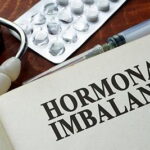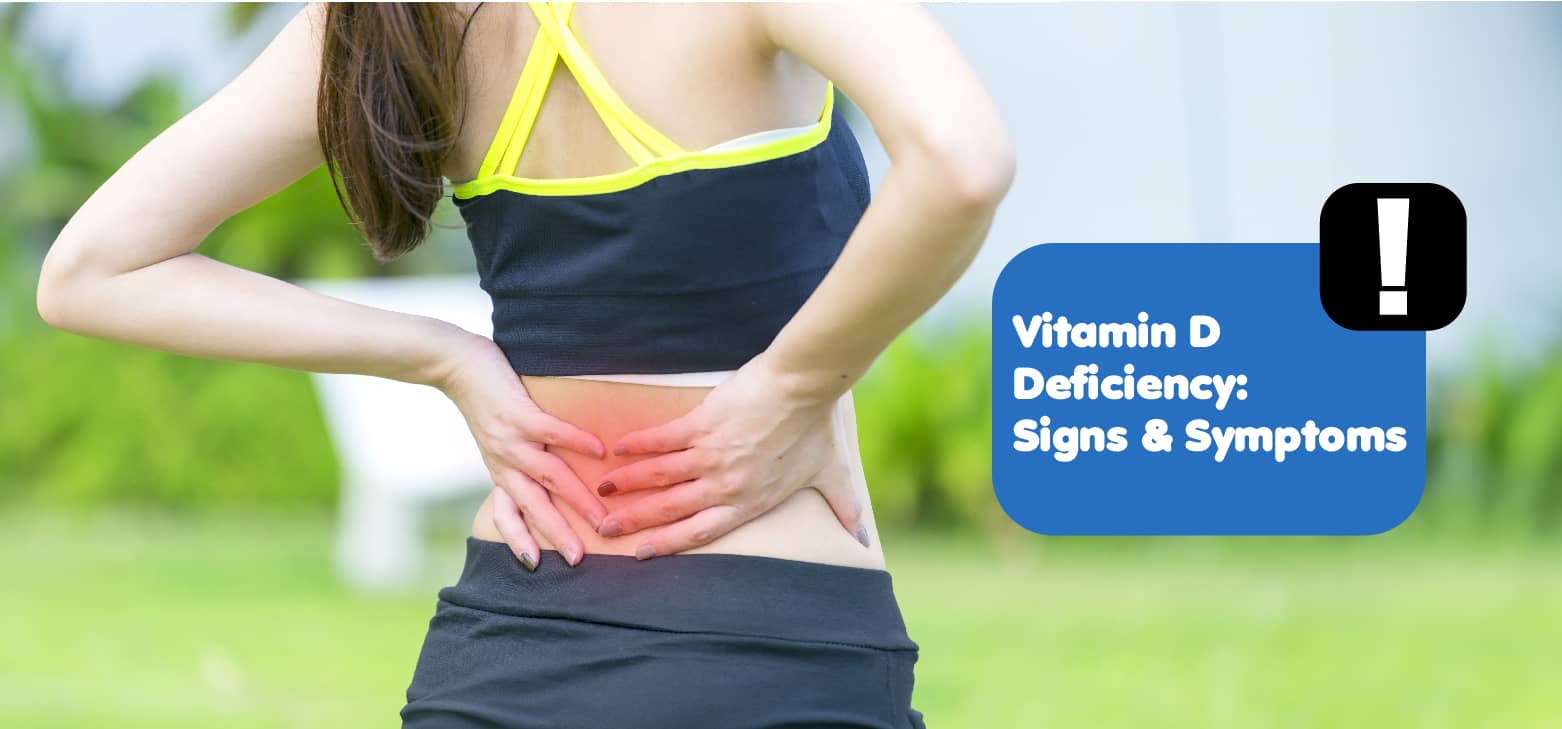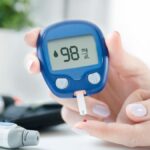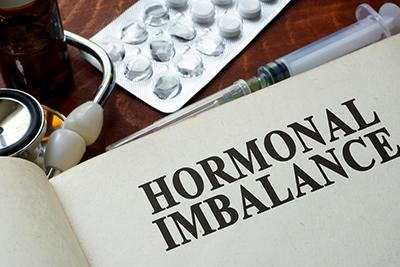Symptoms and Signs of Low Vitamin D
First of all, on signs of low vitamin D; Vitamin D is essential for maintaining strong bones and overall health. When your body lacks sufficient vitamin D, it can lead to several health issues. Some of the most common signs of vitamin D deficiency include:
- Osteoporosis and Low Bone Density: Vitamin D plays a crucial role in calcium absorption, which is necessary for maintaining bone strength. A deficiency can lead to osteoporosis, a condition that weakens bones and increases the risk of fractures.
- Muscle Weakness and Cramps: Inadequate levels of vitamin D may contribute to muscle pain, weakness, and cramps, making daily activities more challenging.
- Hair Loss: Some studies suggest that low vitamin D levels might be linked to hair thinning and excessive hair shedding.
- Tiredness and Fatigue: Many people with vitamin D deficiency report feeling excessively tired, even after getting enough rest.
- Increased Risk of Fractures: Since vitamin D is essential for bone health, a deficiency may make bones brittle, increasing the likelihood of fractures.
Why Does Vitamin D Deficiency Occur?
Vitamin D deficiency happens when your body does not receive or process enough of this essential nutrient. This can be due to several factors, including:
- Limited Sun Exposure: The body naturally produces vitamin D when exposed to sunlight, so staying indoors too often or living in regions with little sunlight can contribute to deficiency.
- Dietary Deficiencies: Since few foods naturally contain vitamin D, people who don’t consume fortified foods or supplements may develop a deficiency.
- Medical Conditions: Certain health issues, such as kidney or liver diseases, can interfere with vitamin D metabolism.
- Age and Skin Tone: Older adults and individuals with darker skin tones may have a reduced ability to produce vitamin D from sunlight.
Challenges in Diagnosing Vitamin D Deficiency
Vitamin D deficiency can be difficult to diagnose because it may not cause noticeable symptoms or can mimic other health conditions.
However, once identified by a healthcare provider through a blood test, the deficiency is usually easy to treat with supplements or dietary adjustments.
Key Symptoms OR Signs of Low Vitamin D
- Fatigue and Tiredness
Many people with low vitamin D levels experience persistent fatigue. While the exact link between vitamin D and energy levels remains unclear, some studies suggest that supplementing with vitamin D may help alleviate fatigue symptoms. You can read more about this connection in a study published in the Journal of Clinical Endocrinology & Metabolism.
- Frequent Illness
If you find yourself getting sick often, a vitamin D deficiency could be a contributing factor. Research has indicated that low vitamin D levels may weaken the immune system, making it harder for your body to fight infections. In fact, studies have found a link between severe illnesses in intensive care unit (ICU) patients and vitamin D deficiency.
The importance of vitamin D in immunity became even more evident during the COVID-19 pandemic. Some studies suggested that people with lower vitamin D levels had a higher risk of contracting COVID-19 and experiencing more severe symptoms. For more insights, check out this study on vitamin D and immune function.
- Muscle Pain and Weakness
Vitamin D is essential for proper muscle function, and a deficiency can lead to various muscular issues. Low levels of vitamin D may contribute to:
- Loss of Muscle Tone and Atrophy: Inadequate vitamin D levels can result in muscle loss, making movement and physical activities more difficult.
- Muscle Weakness and Pain: Deficient individuals may experience persistent muscle discomfort, cramps, or general weakness.
- Increased Risk of Falls: Muscle loss and reduced strength can increase the likelihood of falls, particularly in older adults.
A study published in Bone Reports highlights the role of vitamin D in muscle health and suggests that supplementation may improve muscle function (Gunton & Girgis, 2018).
- Back Pain
Weak muscles due to vitamin D deficiency can place extra strain on the back and neck, potentially leading to chronic pain.
- Lower Back Pain: Research suggests that individuals with low vitamin D levels are more likely to experience persistent lower back pain.
- Screening for Vitamin D Deficiency: Some experts recommend testing vitamin D levels in people with chronic lower back pain since supplementation may help reduce discomfort.
For more details, you can refer to studies on the relationship between vitamin D levels and musculoskeletal pain (read more here).
- Bone Fractures and Osteoporosis
Vitamin D is crucial for calcium absorption and bone health. Without enough vitamin D, bones can become weak and brittle.
- Osteomalacia: In adults, a prolonged deficiency can cause osteomalacia, a condition where bones soften, leading to pain and weakness.
- Osteoporosis: A lack of vitamin D can contribute to low bone density, increasing the risk of osteoporosis, a condition that makes bones fragile and prone to fractures.
- Higher Fracture Risk: Deficiency-related bone weakness can increase the likelihood of fractures, particularly in older adults.
For further insights, the National Osteoporosis Foundation provides valuable resources on bone health and vitamin D’s role in preventing fractures.
- Hair Loss
Vitamin D plays an important role in hair follicle regulation and growth. A deficiency may lead to slower hair growth or excessive shedding.
- Disruptions in Hair Regeneration: Since vitamin D is involved in hair follicle cycling, a deficiency could contribute to hair thinning or slow hair regrowth.
- Alopecia and Vitamin D Deficiency: Alopecia is an autoimmune disorder that causes hair loss, and research suggests that people with this condition tend to have lower levels of vitamin D. Some studies indicate that topical vitamin D treatments may help manage alopecia-related hair loss.
For more details, refer to studies on vitamin D and hair health, such as this review in the International Journal of Trichology (read here).
- Depression
There is ongoing debate about whether vitamin D supplementation can effectively improve depression symptoms. However, multiple studies suggest that people with vitamin D deficiency may be at a higher risk of experiencing depressive episodes.
- The Link Between Vitamin D and Mood: Some research indicates that vitamin D receptors in the brain may influence serotonin production, a neurotransmitter associated with mood regulation.
- Mixed Research Findings: While some studies show a correlation between low vitamin D levels and depression, others do not find supplementation to be significantly beneficial in improving symptoms.
For more details on this connection, check out this review in the Journal of Affective Disorders (read here).
- Weight Gain
Low vitamin D levels have been associated with weight gain, particularly in individuals with obesity.
- Higher Risk in Obese Individuals: Studies suggest that people with obesity are 35% more likely to have a vitamin D deficiency compared to those with a healthy weight. They are also 24% more likely to experience deficiency than individuals classified as overweight.
- Fat Cells Store Vitamin D: One possible reason for this is that vitamin D is stored in fat cells, which may prevent it from being efficiently released into the bloodstream, leading to lower circulating levels.
A systematic review and meta-analysis published in Obesity Reviews explores this relationship in greater depth (Pereira-Santos et al., 2015).
- Eczema
Vitamin D plays a crucial role in immune function and maintaining a healthy skin barrier, both of which are essential in preventing and managing eczema.
- Eczema and Immune Dysfunction: Eczema is a chronic skin condition characterized by inflammation, redness, and itching. Vitamin D deficiency has been linked to an increased frequency and severity of eczema symptoms.
- Potential Benefits of Vitamin D Supplementation: Some studies suggest that supplementing with vitamin D may help improve skin health and reduce flare-ups in individuals with eczema.
For further reading, check out research on vitamin D and skin health in the Journal of Dermatological Science (read here).
- Tooth Decay
Vitamin D is crucial for dental health, as it helps maintain strong teeth and prevent decay.
- Impact on Tooth Strength: A deficiency in vitamin D can weaken tooth enamel, making teeth more susceptible to cavities, fractures, and decay.
- Scientific Findings: A large-scale study involving 18,683 individuals found that people with very low vitamin D levels were at a significantly higher risk of developing dental caries (tooth decay).
For more insights, refer to this study on vitamin D and dental health (read here).
- Gum Disease (Periodontitis)
Vitamin D plays a crucial role in maintaining gum health by aiding calcium absorption and supporting the immune system.
- Increased Risk of Periodontitis: Studies suggest that people with low vitamin D levels may be more susceptible to periodontitis, a severe gum disease that causes inflammation, gum recession, and even tooth loss if left untreated.
- Anti-Inflammatory Effects: Vitamin D has natural anti-inflammatory properties that may help protect the tissue surrounding teeth, reducing the risk of infections and gum damage.
A 2020 study in the Journal of Periodontal Research found a significant association between vitamin D deficiency and the severity of periodontitis (Isola et al., 2020).
- Urinary Tract Infections (UTIs)
Vitamin D contributes to immune defense by helping the body produce antimicrobial peptides, which act as natural antibiotics.
- Deficiency May Increase UTI Risk: Some studies indicate that low vitamin D levels may make individuals, particularly those assigned female at birth, more prone to urinary tract infections (UTIs).
- How UTIs Develop: UTIs occur when bacteria enter the urinary system, affecting the bladder, kidneys, ureters, or urethra. Symptoms may include frequent urination, burning sensation, and pelvic pain.
For more insights, check out research on vitamin D’s role in preventing infections (read here).
- Incontinence and Pelvic Floor Disorders (PFDs)
Vitamin D is essential for muscle strength, including the muscles in the pelvic floor, which support the bladder, uterus, and rectum.
- Weakened Pelvic Floor Muscles: A deficiency in vitamin D may lead to reduced muscle tone, increasing the risk of urinary incontinence, fecal incontinence, and pelvic organ prolapse.
- Research Findings: A meta-analysis found that individuals with pelvic floor disorders (PFDs) had significantly lower vitamin D levels compared to those without PFDs.
Pelvic organ prolapse occurs when weakened pelvic muscles cause organs to drop and, in some cases, bulge into the vagina. More research is needed to determine vitamin D’s exact role in preventing or treating these conditions (read more here).
- Rickets (Bone Softening in Children)
Rickets is a pediatric bone disease characterized by the softening and weakening of bones, primarily due to vitamin D deficiency.
- Nutritional Rickets: This condition occurs when children do not get enough vitamin D and calcium in their diet, leading to bone deformities, delayed growth, and muscle weakness.
- Treatment and Prevention: When diagnosed, vitamin D and calcium supplementation can correct most bone damage within months, sometimes even within days.
- Recommended Daily Intake: The American Academy of Pediatrics (AAP) recommends that all infants, children, and adolescents receive a minimum of 400 IU of vitamin D per day to prevent rickets and support overall bone development.
For more information, visit the AAP’s guidelines on vitamin D intake (read here).
Understanding Vitamin D Deficiency: Causes, Sources, Treatment, and Prevention
Vitamin D is a fat-soluble vitamin that plays a crucial role in bone health, immune function, muscle strength, and overall well-being. Since vitamin D deficiency is common worldwide, understanding its causes, dietary sources, treatment options, and prevention strategies is essential.
Causes of Vitamin D Deficiency
Several factors contribute to low vitamin D levels, including:
- Limited Sun Exposure: Vitamin D is primarily synthesized in the skin through exposure to sunlight. People who spend most of their time indoors, live in high-latitude regions, or consistently wear sunscreen may struggle to get enough.
- Darker Skin Tones: Higher melanin levels reduce the skin’s ability to produce vitamin D from sunlight. This makes individuals with darker skin more susceptible to deficiency.
- Aging: Older adults have reduced skin capacity to synthesize vitamin D and are also more likely to spend less time outdoors.
- Dietary Deficiencies: People who do not consume vitamin D-rich foods, such as fatty fish, dairy products, and fortified foods, are at risk.
- Certain Medical Conditions: Malabsorption disorders like celiac disease, Crohn’s disease, and cystic fibrosis can interfere with the body’s ability to absorb vitamin D.
- Obesity: Since vitamin D is stored in fat cells, excessive body fat can sequester vitamin D, preventing it from being used effectively.
- Kidney or Liver Disease: These organs play a role in converting vitamin D into its active form. Any dysfunction in these organs can impair vitamin D metabolism.
Best Food Sources of Vitamin D
Since it can be challenging to get sufficient vitamin D from sunlight alone, including vitamin D-rich foods in your diet is important. Here are some of the best sources:
Animal-Based Sources (Highest in Vitamin D3)
- Fatty Fish (best natural sources)
- Salmon (570 IU per 3.5 oz serving)
- Mackerel (360 IU per 3.5 oz serving)
- Tuna (268 IU per 3.5 oz serving)
- Sardines (193 IU per 3.5 oz serving)
- Cod Liver Oil (1,360 IU per tablespoon – one of the richest sources)
- Egg Yolks (44 IU per large egg)
- Beef Liver (50 IU per 3.5 oz serving)
- Cheese (10-40 IU per 1 oz serving, depending on the type)
Plant-Based and Fortified Sources (Best for Vegetarians/Vegans)
- Mushrooms (UV-exposed varieties contain up to 450 IU per 3.5 oz)
- Fortified Dairy and Plant-Based Milks (100-130 IU per cup)
- Fortified Orange Juice (100 IU per cup)
- Fortified Cereals (80-100 IU per serving)
- Fortified Tofu (100-150 IU per serving)
Vitamin D Treatment Options
If a deficiency is diagnosed, healthcare providers typically recommend one or more of the following treatments:
- Increased Sun Exposure
- How Much Sunlight Do You Need?
- Light-skinned individuals: 10–30 minutes of midday sun exposure (without sunscreen) on the face, arms, and legs a few times per week.
- Darker-skinned individuals: May require longer exposure (30 minutes to 2 hours) since melanin reduces vitamin D production.
- Elderly individuals or people in winter months: Might not get enough sunlight and should consider supplements or fortified foods.
- Dietary Adjustments
- Increase consumption of vitamin D-rich foods listed above.
- Choose fortified foods if natural sources are limited.
- Pair vitamin D foods with healthy fats (e.g., olive oil, avocado) to enhance absorption.
- Vitamin D Supplements
When dietary intake and sunlight exposure are insufficient, supplements can help correct deficiency.
Types of Vitamin D Supplements
- Vitamin D2 (Ergocalciferol): Plant-based, less potent than D3.
- Vitamin D3 (Cholecalciferol): Animal-based, more effective at raising blood levels.
Recommended Daily Dosage
- Infants (0-12 months): 400 IU
- Children (1-18 years): 600 IU
- Adults (19-70 years): 600 IU
- Older Adults (71+ years): 800 IU
- Pregnant & Breastfeeding Women: 600-800 IU

Prevention Strategies for Vitamin D Deficiency
- Get Regular Sun Exposure
- Spend time outdoors between 10 AM – 3 PM when UVB rays are strongest.
- If wearing sunscreen, aim for short sun exposure before applying it.
- If living in a low-sunlight region, consider alternative sources.
- Eat a Balanced Diet Rich in Vitamin D
- Include fatty fish at least twice a week.
- Choose fortified products (e.g., cereals, dairy, plant-based milks).
- Incorporate eggs and mushrooms into meals.
- Take Supplements If Necessary
- If at risk, take a daily vitamin D supplement based on your doctor’s recommendation.
- Some high-risk groups (e.g., elderly, pregnant women, people with malabsorption conditions) may require supplementation year-round.
- Monitor Vitamin D Levels
- Get a blood test (25-hydroxyvitamin D test) if you suspect a deficiency.
- Regular check-ups help determine whether dietary changes or supplements are needed.
Final Thoughts
Vitamin D deficiency can lead to a range of health issues, from bone weakness and muscle pain to depression, immune dysfunction, and skin problems. Fortunately, it is easily preventable and treatable with the right approach.
- Prioritize sunlight exposure while balancing the risk of overexposure.
- Eat vitamin D-rich foods and choose fortified options when needed.
- Supplement wisely if you’re at risk or diagnosed with a deficiency.
- Stay proactive by monitoring your vitamin D levels and making necessary lifestyle adjustments.
Disclaimer
The information provided on My Emerald Health (www.myemeraldhealth.com) is for informational and educational purposes only and should not be considered medical advice, diagnosis, or treatment. While we strive to provide accurate and up-to-date health-related content, the information on this website is not a substitute for professional medical advice from a qualified healthcare provider.
Medical Disclaimer
Always consult with a physician, licensed healthcare provider, or medical professional before making any changes to your diet, lifestyle, or healthcare regimen, especially if you have an existing medical condition, are pregnant, nursing, or taking medications. Reliance on any information provided by My Emerald Health is solely at your own risk.
Health and Wellness Products
Any supplements, vitamins, or wellness products mentioned or sold on this website are not intended to diagnose, treat, cure, or prevent any disease. Statements regarding these products have not been evaluated by the Food and Drug Administration (FDA) or any other regulatory authority.
External Links and Third-Party Content
Our website may contain links to third-party websites for informational purposes. We do not endorse, control, or assume responsibility for the accuracy, privacy policies, or practices of any external websites. Visitors should review the policies of these third-party sites before engaging with their content.
Limitation of Liability
My Emerald Health, its affiliates, employees, and contributors shall not be held liable for any direct, indirect, incidental, or consequential damages arising from the use of this website or reliance on any information provided herein.
Changes to Disclaimer
We reserve the right to update, modify, or change this disclaimer at any time without prior notice. By using this website, you acknowledge and agree to the terms outlined in this disclaimer.
For any concerns or inquiries, please contact us at myemeraldhealth@gmail.com
What are the pros and cons of a vegan diet?
How Do You Feel When Your Sugar Is Low?
Benefits of Cloves to The Vagina

A graduate of Computer Science and Information Management Technology. Diploma – Caregiving, Certificates – Dementia and Diabetes Awareness and Management. A researcher, blogger, songwriter, singer and acoustic guitarist. Born in an environment where natural talents such as healing are imparted at our natural birth. This natural talents of healing is the result of our genetic inheritance and the training from family environment.


















